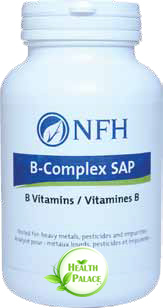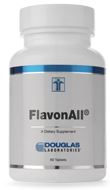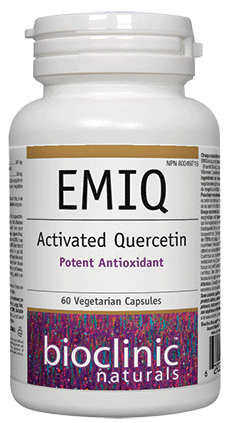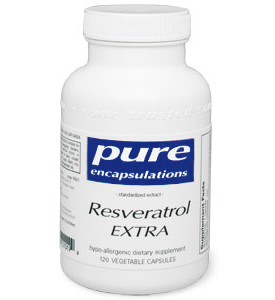Top 10 Brain Boosting Supplements | Nutrition for Brain Health and Cognitive Performance
Nutrients And Their Life Changing Effects On Brain Health.
In recent years advancement in molecular and cellular technology has clarified the critical impact of nutrition on biochemical and gene activity of the brain cells as well as other cells. Nutrition and genes interact on multiple levels (mechanisms) leading to changes in biological structures. Also, studies have shown different individuals with different genetic variability may respond differently to the nutrients. All of which is helping to find better nutrition for optimum health and wellbeing. In this article, we explore the studies on nutrition and its important role in different areas of brain health.
Science uses the term epigenetic to explain the ways that change the gene expression without affecting the DNA sequence or structure. For example, methylation reduces gene activity while Acetylation increases gene activity. Studies suggest epigenetic mechanisms are reversible and plastic. The methylation process is studied for cognition, depression, eating disorders, autism and schizophrenia.
Having good mental health does not simply mean the absence of mental disease. Mentally healthy individuals can find their potential, cope with normal stressors of life, work with productivity and contribute to the community. Socioeconomic and environmental elements including nutrition contribute to the quality of life and mental well-being of individuals.

Metabolism & Brain Health
Balanced metabolism, amount of energy intake, and physical activity greatly impact brain health. Numerous studies show balanced energy intake and physical activity improve mood and cognition, while a high caloric diet, sedentary lifestyle, and metabolic syndrome (including obesity, diabetes, etc) have been related to an increased risk of depression and dementia.
Imbalanced metabolism throughout life impacts several hormones and growth factors. These hormones affect the brain cell receptors and modify the brain structure and gene expression. For instance, research has found that high caloric intake increases the concentration of free radicals (highly reactive oxygen molecules) and lowers brain-derived neurotrophic factor (BDNF), and low BDNF compromises the brain cells' communication and reduces cognition.
Based on recent research exercise and balanced metabolism increase the amount of BDNF. A higher amount of BDNF lowers the methylation rate of the DNA in brain cells and improves cell communication. Also, certain nutrients like DHA omega 3 fatty acid were found to enhance this positive effect. Decades of investigations and data analysis have clarified the impact of nutrition and lifestyle on both categories of Neuro-developmental and Neuro-degenerative disorders. Neuro-developmental diseases include autism, schizophrenia, and an eating disorder. Neurodegenerative disorders are including cognitive decline, dementia, Alzheimer's disease, etc. However, these two categories are not completely separable, because it is very evident that early life disorders produce both immediate and long-time complications.
Supplements for Brain Health
Prenatal nutrition plays an important role in brain development. Researchers found that redistricted access to proper food and nutrition increases the cases of neurodevelopmental disorders significantly. Prenatal nutritional deficiencies of macro-nutrients like protein, and micro-nutrients like iodine, zinc, copper, vitamins including folate and B complex, and Essential Fatty Acids found to be responsible for modifying key brain genes and an increase in brain cells' DNA methylation.
Lipids are formed 50-60% of the brain weight. Among the lipids, the DHA is found in a very high concentration in the brain tissue in comparison to other parts of the body. DHA is found in higher concentration in the eyes' Retina and the brain's Gray Matter. Essential Fatty acids (EFAs) influence the function of the nerve cells in multiple ways. For example, the neural cell membrane contains a great amount of phospholipid fatty acids, and receptors for the neurotransmitters (chemical compounds transferring signals/data from one neuron to the other) are placed on this membrane. Animal studies indicated that the deficiency in EFA's reduces the number of dopamine and serotonin receptors on the frontal lobe as well as alters their production. Human studies have found infants with additional DHA in their diet during 18 months show 7 points increase in their mental development index. Other human researchers suggest that changes in neurotransmitter function in Attention Deficit Hyperactivity Disorder (ADHD) are related to lower levels of DHA in the cellular membrane. Epidemiological and clinical studies have found a relation between Depression and Omega 3 deficiency.
Studies have found that in some patients, impaired glucose metabolism in the brain may contribute to cognitive decline. Improving Insulin Sensitivity was found promising to lower the risks of Alzheimer's and improve the brain glucose metabolism. In addition, replacing glucose with ketones as fuel for the brain may help improve brain function. As the brain cells are very sensitive to the lack of energy, ketogenic supplements help to reduce further cognitive decline, especially in those individuals who have a problem metabolizing glucose in their brains. Medium Chain Triglycerides (MCT) and DHA omega-3 fatty acids are found to play an important role in improving brain energy and metabolism.
Usually, studies on cognitive decline target individuals over 60 years of age. However, more recent research showed that cognitive decline is starting much earlier around the age of 45-50. This is important in particular because small cognitive changes in earlier life increase the risk of developing more serious complications like dementia and Alzheimer's later on. Reviewing the effects of exercise on the brain showed moderate aerobic exercise and activities such as walking and gardening are beneficial in preventing and alleviating Alzheimer’s. Recent Findings also suggest a reduction in excess sugar consumption particularly for those deficient in essential fatty acids, as well as taking B vitamins and Folate play a very important role in decreasing Homocysteine levels which is a risk factor for brain shrinkage and dementia. Two years of supplementing with B vitamins in a group of 70 years of age slowed and lowered the rate of moderate cognitive decline.

Flavonoids & their Brain Effects
Consuming flavonoids has been suggested to reduce, prevent and/or reverse neurodegenerative disorders. These potent antioxidants protect the brain cells against toxins, reduce inflammation and potentially improve cognition. Research suggests flavonoids can help our brain via three different mechanisms including a) ability to interact with brain cell signaling mechanism related to self-destruction and differentiation of the brain cells, b) by improving general and cerebral circulation, and c) directly via their antioxidant property they neutralize toxins and damaging free radicals produced by the brain cells.
What are flavonoids?
Flavonoids are made by plants through enzymatic pathways. Flavonoids are found in fruits, seeds, vegetables, herbs, etc. Flavonoids are sharing similar core structures with different branches which results in different groups and subgroups of flavonoids including:
- flavonols (e.g. catechin, epicatechin, epigallocatechin, epicatechin gallate, epigallocatechin gallate (EgCG), and proanthocyanidins) are found in green tea, black tea, red wine, apples, and cacao.
- flavones (e.g. apigenin) are found in artichoke, celery, parsley, chives, and other herbs
- flavanones (e.g. naringenin, hesperetin) are found predominantly in citrus fruit and tomatoes
- flavonols (e.g. quercetin) which are found predominantly in onions, leeks, and broccoli.
- isoflavones (e.g. daidzein and genistein) are found in soybean and soy products.
- anthocyanidins are found in red wine and berry fruits such as blueberries, blackberries, cherries, and strawberries.
- proanthocyanidins(tannins) are found in grapes and many berry fruits
Neuro-inflammation is responsible for the progression of the diseases such as Alzheimer's and Parkinson's. Recent studies show that flavanones such as Hesperetin, and Naringenin are found in high quantities in citrus fruits, flavonoids present in blueberry, flavanols catechin, and epigallocatechin gallate (Egcg), and the isoflavone genistein all can reduce neuroinflammation via different pathways. Egcg from green tea and Ginkgo biloba extract is found to protect the brain cells against neurotoxins.
Flavonoids are now well known to modulate neuronal signaling pathways involved in increasing the number of, and strength of, connections between neurons. For example in studies Fisetin, a flavonoid found in strawberries is shown to increase object recognition in mice. Other flavonoids such as Quercetin, Hesperetin, and blueberries were found to be beneficial in improving memory skills.

Brain imaging techniques show that there is a link between cerebral blood flow and cognition. For example, Low cerebral blood flow is associated with dementia. Multiple human research indicates the benefits of flavonoids in improving cardiovascular health which is consequently beneficial in improving cognition. Evidence suggests Flavonoids can prevent many different types of cerebrovascular diseases. Improving brain circulation promotes new hippocampal cells' formation near the blood vessels and that may benefit memory. Human brain exams show consuming flavanol-rich cacao in less than 2 hours increased blood flow and oxygenation in certain regions of the brain.
Flavonoids promote neuronal survival and differentiation. Flavonoids also enhance peripheral and cerebral blood circulation. These functions induce beneficial changes in the cellular architecture required for cognition and interpreting nerve or sensory information, for the storage, processing, and retrieval of memory, and for protecting against neuronal losses through aging, known to adversely affect populations or connections of the brain cells over time, leaving the system less efficient in the processing and storage of sensory information.
Brain-derived neurotrophic factor (BDNF) is one of the neurotrophic factors which is crucial in both the protection and repair of brain cells. Levels of brain BDNF are related to human learning, memory, and cognitive function. BDNF is a biomarker that passes the brain-blood barrier, and its plasma level is indicative of brain health. Animal studies show taking Flavonoids increases the BDNF suggesting that there is a possibility that the same may occur in human subjects. A significant number of research and clinical studies support the positive effects of exercise and balanced metabolism on improving mental health and well-being. Nutrition plays an important role in gene expression which consequently will help in preventing and/or improving mental health conditions. The impact of plant nutrients, vitamins, and essential fatty acids on the brain cells and their response is observed by measuring brain biomarkers such as BDNF and advanced brain imaging techniques.
Articles and products featured by Health Palace are collected from a variety of sources and are provided as a service by Health Palace. These newsletters, while of potential interest to readers, do not necessarily represent the opinions nor constitute the advice of Health Palace. Presented materials are only for information purposes and do not intend to treat, cure, or prevent any disease.
References:
- 1.Dauncey MJ (2009) New insights into nutrition and cognitive neuroscience. Proc Nutr Sci 68, 408–415.
- 2.Benton D (2010) The influence of dietary status on the cognitive performance of children. Mol Nutr Food Res 54, 457–470.
- 3.Gu Y & Scarmeas N (2011) Dietary patterns in Alzheimer’s disease and cognitive aging. Curr Alzheimer Res 8,510–519.
- 4.Innis SM (2011) Metabolic programming of long-term outcomes due to fatty acid nutrition in early life. Maternal Child Nutr 7, 112–123.
- 5.Kennedy DO & Wightman EL (2011) Herbal extracts and phytochemicals: plant secondary metabolites and the enhancement of human brain function. Adv Nutr 2, 32–50.
- 6.Morris MC (2012) Nutritional determinants of cognitive aging and dementia. Proc Nutr Soc 71, 1–13.
- 7.Kussmann M, Krause L & Siffert W (2010) Nutrigenomics: where are we with genetic and epigenetic markers for disposition and susceptibility? Nutr Rev 68, S38–S47.
- 8.Mathers JC, Strathdee G, Relton CL et al. (2010) Induction of epigenetic alterations by dietary and other environmental factors. Adv Genet 71, 3–39.
- 9.Zhang TY & Meaney MJ (2010) Epigenetics and the environmental regulation of the genome and its function. Annu Rev Psychol 61, 439–466.
- 10.Simmons R (2011) Epigenetics and maternal nutrition. Proc Nutr Soc 70, 73–81.
- 11.Haggarty P, Hoad G, Harris SE et al. (2010) Human intelligence and polymorphisms in the DNA methyltransferase genes involved in epigenetic marking. PLoS One 5, e11329.
- 12.World Health Organization (2012) Health topics: Mental health (www.who.int).
- 13.Burkhalter TM & Hillman CH (2011) A narrative review of physical activity, nutrition, and obesity to cognition and scholastic performance across the human lifespan. Adv Nutr 2, 201S–206S.
- 14.Foster PP, Rosenblatt KP & Kuljis RO (2011) Exerciseinduced cognitive plasticity, implications for mild cognitive impairment and Alzheimer’s disease. Front Neurol 2, 28.
- 15.Dauncey MJ, White P, Burton KA et al. (2001) Nutritionhormone receptor-gene interactions: implications for development and disease. Proc Nutr Soc 60, 63–72.
- 16.Dauncey MJ & White P (2004) Nutrition and cell communication: insulin signalling in development, health and disease. Rec Res Dev Nutr 6, 49–81.
- 17.Gomez-Pinilla F (2008) Brain foods: the effects of nutrients on brain function. Nature 9, 568–578.
- 18.Erickson KI, Miller DL & Roecklein KA (2012) The aging hippocampus: interactions between exercise, depression,
- 19.and BDNF. Neuroscientist 18, 82–97.
- 20.Symonds ME, Sebert SP, Hyatt MA et al. (2009) Nutritional programming of the metabolic syndrome. Nat Rev Endocrinol 5, 604–610.
- 21.Gomez-Pinilla F, Zhuang Y, Feng J et al. (2011) Exercise impacts brain-derived neurotrophic factor plasticity by engaging mechanisms of epigenetic regulation. Eur J Neurosci 33, 383–390.
- 22.Gomez-Pinilla F & Ying Z (2010) Differential effects of exercise and dietary docosahexaenoic acid on molecular systems associated with control of allostasis in the hypothalamus and hippocampus. Neuroscience 168, 130–137.
- 23.Keers R & Uher R (2011) Gene–environment interaction in major depression and antidepressant treatment response.
- 24.Curr Psychiatry Rep 14, 129–137.
- 25.McGrath J, Brown A & St Clair D (2010) Prevention and schizophrenia – the role of dietary factors. Schizophr Bull 37, 272–283.
- 26.Brown AS & McGrath JJ (2010) The prevention of schizophrenia.
- 27.Schizophr Bull 37, 257–261.
- 28.Susser E, Neugebauer R, Hoek HW et al. (1996) Schizophrenia after prenatal famine. Further evidence. Arch Gen Psychiatry 53, 25–31.
- 29.Bale TL, Baram TZ, Brown AS et al. (2010) Early life programming and neurodevelopmental disorders. Biol Psychiatry
- 30.68, 314–319.
- 31.Dauncey MJ & Bicknell RJ (1999) Nutrition and neurodevelopment: mechanisms of developmental dysfunction
- 32.and disease in later life. Nutr Res Rev 12, 231–253.
- 33.Park LK, Friso S & Choi SW (2012) Nutritional influences on epigenetics and age-related disease. Proc Nutr Soc 71, 75–83.
- 34.Barberger-Gateau P, Samieri C, Fe´art C et al. (2011) Dietary omega 3 polyunsaturated fatty acids and Alzheimer’s disease: interaction with apolipoprotein E genotype. Curr Alzheimer Res 8, 479–491.
- 35.Grodstein F (2011) How early can cognitive decline be detected? Br Med J 343, d7652.
- 36.de Jager CA, Oulhaj A, Jacoby R et al. (2011) Cognitive and clinical outcomes of homocysteine-lowering B-vitamin treatment in mild cognitive impairment: a randomized controlled trial. Int J Geriatr Psychiatry (Epublication ahead of print).
- 37.Bosco D, Fava A, Plastino M et al. (2011) Possible implications of insulin resistance and glucose metabolism in Alzheimer’s disease pathogenesis. J Cell Mol Med 15, 1807–1821.
- 38.Pifferi F, Jouin M, Alessandri JM et al. (2010) n-3 longchain fatty acids and regulation of glucose transport in two models of rat brain endothelial cells. Neurochem Int 56, 703–710.
- 39.Spencer JPE (2008) Flavonoids: modulators of brain function? Br J Nutr 99, E Suppl. 1, ES60–ES77.
- 40.Vafeiadou K, Vauzour D & Spencer JP (2007) Neuroinflammation and its modulation by flavonoids. Endocr Metab Immune Disord Drug Targets 7, 211–224.
- 41.Spencer JPE (2009) The impact of flavonoids on memory: physiological and molecular considerations. Chem Soc Rev 38, 1152–1161.
- 42.Rice-Evans C (2001) Flavonoid antioxidants. Curr Med Chem 8, 797–807.
- 43.Rice-Evans C (1995) Plant polyphenols: free radical scavengers or chain-breaking antioxidants? Biochem Soc Symp 61, 103–116.
- 44.Spencer JPE, Kuhnle GG, Williams RJ et al. (2003) Intracellular metabolism and bioactivity of quercetin and its in vivo metabolites. Biochem J 372, 173–181.
- 45.Spencer JPE, Schroeter H, Crossthwaithe AJ et al. (2001) Contrasting influences of glucuronidation and O-methylation of epicatechin on hydrogen peroxide-induced cell death in neurons and fibroblasts. Free Radic Biol Med 31, 1139– 1146.
- 46.Peng HW, Cheng FC, Huang YT et al. (1998) Determination of naringenin and its glucuronide conjugate in rat plasma and brain tissue by high-performance liquid chromatography. J Chromatogr B Biomed Sci Appl 714, 369–374.
- 47.Suganuma M, Okabe S, Oniyama M et al. (1998) Wide distribution of [H-3](-)-epigallocatechin gallate, a cancer preventive tea polyphenol, in mouse tissue. Carcinogenesis 19, 1771–1776.
- 48.Abd El Mohsen MM, Kuhnle G, Rechner AR et al. (2002) Uptake and metabolism of epicatechin and its access to the brain after oral ingestion. Free Radic Biol Med 33, 1693–1702.
- 49.Kalt W, Blumberg JB, McDonald JE et al. (2008) Identification of anthocyanins in the liver, eye, and brain of blueberry-
- 50.fed pigs. J Agric Food Chem 56, 705–712.
- 51.Spencer JPE (2007) The interactions of flavonoids within neuronal signalling pathways. Gen Nutr 2, 257– 273.
- 52.Spencer JPE (2008) Food for thought: the role of dietary flavonoids in enhancing human memory, learning and neuro-cognitive performance. Proc Nutr Soc 67, 238–252.
- 53.Matter WF, Brown RF & Vlahos CJ (1992) The inhibition Yuan J & Yankner BA (2000) Apoptosis in the nervous
- 54.system. Nature 407, 802–809.
- 55.Hirsch EC, Hunot S & Hartmann A (2005) Neuroinflammatory processes in Parkinson’s disease. Parkinsonism Relat Disord 11, Suppl. 1, S9–S15.
- 56.McGeer EG & McGeer PL (2003) Inflammatory processes in Alzheimer’s disease. Prog Neuropsychopharmacol Biol
- 57.Psychiatry 27, 741–749.
- 58.Vafeiadou K, Vauzour D, Lee HY et al. (2009) The citrus flavanone naringenin inhibits inflammatory signalling in
- 59.glial cells and protects against neuroinflammatory injury. Arch Biochem Biophys 484, 100–109.
- 60.Lau FC, Bielinski DF & Joseph JA (2007) Inhibitory effects of blueberry extract on the production of inflammatory
- 61.mediators in lipopolysaccharide-activated BV2 microglia. J Neurosci Res 85, 1010–1017.
- 62.Lee H, Kim YO, Kim H et al. (2003) Flavonoid wogonin from medicinal herb is neuroprotective by inhibiting inflammatory activation of microglia. FASEB J 17, 1943–1944.
- 63.Jellinger KA (2001) Cell death mechanisms in neurodegeneration. J Cell Mol Med 5, 1–17.
- 64.Joseph J, Cole G, Head E et al. (2009) Nutrition, brain aging, and neurodegeneration. J Neurosci 29, 12795–12801.
- 65.Mandel SA, Amit T, Weinreb O et al. (2008) Simultaneous manipulation of multiple brain targets by green tea catechins: a potential neuroprotective strategy for Alzheimer and Parkinson diseases. CNS Neurosci Ther 14, 352–365.
- 66.Lee S, Suh S & Kim S (2000) Protective effects of the green tea polyphenol (-)-epigallocatechin gallate against hippocampal
- 67.neuronal damage after transient global ischemia in gerbils. Neurosci Lett 287, 191–194.
- 68.Williams CM, El Mohsen MA, Vauzour D et al. (2008) Blueberry-induced changes in spatial working memory correlate with changes in hippocampal CREB phosphorylation and brain-derived neurotrophic factor (BDNF) levels. Free Radic Biol Med 45, 295–305.
- 69.Macready AL, Kennedy OB, Ellia JA et al. (2009) Flavonoids and cognitive function: A review of human randomized controlled trial studies and recommendations for future studies. Genes Nutr 4, 227–242.
- 70.Joseph JA, Shukitt-Hale B, Denisova NA et al. (1998) Long-term dietary strawberry, spinach, or vitamin E supplementation retards the onset of age-related neuronal signal-transduction and cognitive behavioral deficits. J Neurosci 18, 8047–8055.
- 71.Joseph JA, Shukitt-Hale B, Denisova NA et al. (1999) Reversals of age-related declines in neuronal signal transduction,
- 72.cognitive, and motor behavioral deficits with blueberry, spinach, or strawberry dietary supplementation. J Neurosci 19, 8114–8121.
- 73.Joseph JA, Denisova NA, Arendash G et al. (2003) Blueberry supplementation enhances signaling and prevents behavioral deficits in an Alzheimer disease model. Nutr Neurosci 6, 153–162.
- 74.Joseph JA, Shukitt-Hale B & Casadesus G (2005) Reversing the deleterious effects of aging on neuronal communication and behavior: beneficial properties of fruit polyphenolic compounds. Am J Clin Nutr 81, Suppl., 313S–316S.
- 75.Joseph JA, Shukitt-Hale B & Lau FC (2007) Fruit polyphenols and their effects on neuronal signaling and behavior in senescence. Ann N Y Acad Sci 1100, 470–485.
- 76.Shukitt-Hale B, Lau FC & Joseph JA (2008) Berry fruit supplementation and the aging brain. J Agric Food Chem 56, 636–641.
- 77.Shukitt-Hale B, Carey A, Simon L et al. (2006) Effects of Concord grape juice on cognitive and motor deficits in aging. Nutrition 22, 295–302.
- 78.Spencer JPE (2009) Flavonoids and brain health: multiple effects underpinned by common mechanisms. Genes Nutr 4, 243–250.
- 79.Bramham CR & Messaoudi E (2005) BDNF function in adult synaptic plasticity: the synaptic consolidation hypothesis. Prog Neurobiol 76, 99–125.
- 80.Peng S, Wuu J, Mufson EJ et al. (2005) Precursor form of brain-derived neurotrophic factor and mature brain-derived neurotrophic factor are decreased in the pre-clinical stages of Alzheimer’s disease. J Neurochem 93, 1412–1421.
- 81.Stein JH, Keevil JG, Wiebe DA et al. (1999) Purple grape juice improves endothelial function and reduces the susceptibility of LDL cholesterol to oxidation in patients with coronary artery disease. Circulation 100, 1050–1055.
- 82.Heiss C, Dejam A, Kleinbongard P et al. (2003) Vascular effects of cocoa rich in flavan-3-ols. JAMA 290, 1030–1031.
- 83.Taubert D, Berkels R, Roesen R et al. (2003) Chocolate and blood pressure in elderly individuals with isolated systolic hypertension. JAMA 290, 1029–1030.
- 84.Grassi D, Lippi C, Necozione S et al. (2005) Short-term administration of dark chocolate is followed by a significant increase in insulin sensitivity and a decrease in blood pressure in healthy persons. Am J Clin Nutr 81, 611–614.
- 85.Sies H, Schewe T, Heiss C et al. (2005) Cocoa polyphenols and inflammatory mediators. Am J Clin Nutr 81, Suppl., 304S–312S.
- 86.Keen CL, Holt RR, Oteiza PI et al. (2005) Cocoa antioxidants and cardiovascular health. Am J Clin Nutr 81, Suppl., 298S–303S.
- 87.Schroeter H, Heiss C, Balzer J et al. (2006) (-)-Epicatechin mediates beneficial effects of flavanol-rich cocoa on vascular function in humans. Proc Natl Acad Sci USA 103, 1024–1029.
- 88.Heiss C, Kleinbongard P, Dejam A et al. (2005) Acute consumption of flavanol-rich cocoa and the reversal of endothelial dysfunction in smokers. J Am Coll Cardiol 46, 1276–1283.
- 89.Duffy SJ, Keaney JF Jr, Holbrook M et al. (2001) Shortand long-term black tea consumption reverses endothelial dysfunction in patients with coronary artery disease. Circulation 104, 151–156.
- 90.Taubert D, Roesen R & Schomig E (2007) Effect of cocoa and tea intake on blood pressure: a meta-analysis. Arch Intern Med 167, 626–634.
- 91.Grassi D, Necozione S, Lippi C et al. (2005) Cocoa reduces blood pressure and insulin resistance and improves endothelium-
- 92.dependent vasodilation in hypertensives. Hypertension 46, 398–405.
- 93.Commenges D, Scotet V, Renaud S et al. (2000) Intake of flavonoids and risk of dementia. Eur J Epidemiol 16, 357– 363.
- 94.Palmer TD, Willhoite AR & Gage FH (2000) Vascular niche for adult hippocampal neurogenesis. J Comp Neurol 425, 479–494.
- 95.Laske C, Stransky E, Leyhe T et al. (2006) Stage-dependent BDNF serum concentrations in Alzheimer’s disease. J Neural Transm 113, 1217–1224.
- 96.Shimizu E, Hashimoto K, Okamura N et al. (2003) Alterations of serum levels of brain-derived neurotrophic factor (BDNF) in depressed patients with or without antidepressants. Biol Psychiatry 54, 70–75.
NFH EGCG SAP 60 Veg Capsules
|
Genestra C 1000 Vitamin 120 Tablets |
NFH Grape Seed SAP 60 Veg Capsules | |||||||
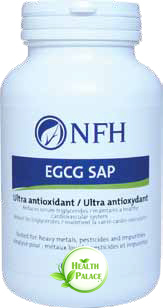 Epigallocatechin gallate (EGCG), a potent natural antioxidant, is the major chemopreventive agent in green tea. Evidence also suggests green tea extract and EGCG contribute to weight loss through... |
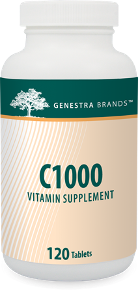 A factor in the maintenance of good health. Helps in the development and maintenance of bones, cartilage, teeth and gums... Read more |
|
|||||||
|
|
|
|
|
|
|||||
|
|
|
|
|||||||
| Douglas Laboratories Flavon All 60 Tablets | Bioclinic Naturals EMIQ 60 Veg Capsules |
|
|
||||||
|
FlavonAll®, provided by Douglas Laboratories®, is a convenient dietary multi-flavonoid supplement designed to provide a broad spectrum of beneficial antioxidant flavonoids in nutritionally meaningful amounts..... ...Read more |
|
Resveratrol EXTRA combines 100 mg trans resveratrol per capsule with red wine polyphenols and grape seed extract for healthy cellular and cardiovascular function. One capsule of Resveratrol EXTRA contains.... |
|||||||
|
|
|
Recent Posts
-
Maintain A Healthy Heart Rhythm With Integrative Medicine
Maintain A Healthy Heart Rhythm With Integrative Medicine;Usually, abnormal heart rate or arrhythmi …4th Feb 2021 -
How To Protect Against COVID-19
Coronaviruses are a large group of viruses that cause many common human and animal infections. In hu …30th Jun 2020 -
How to Prevent Gallstones from Forming? | Natural Supplements for Gallstones
How To Prevent Gallstone Formation?Gallstones are hard deposits made of cholesterol or bilirubin f …4th Mar 2020


